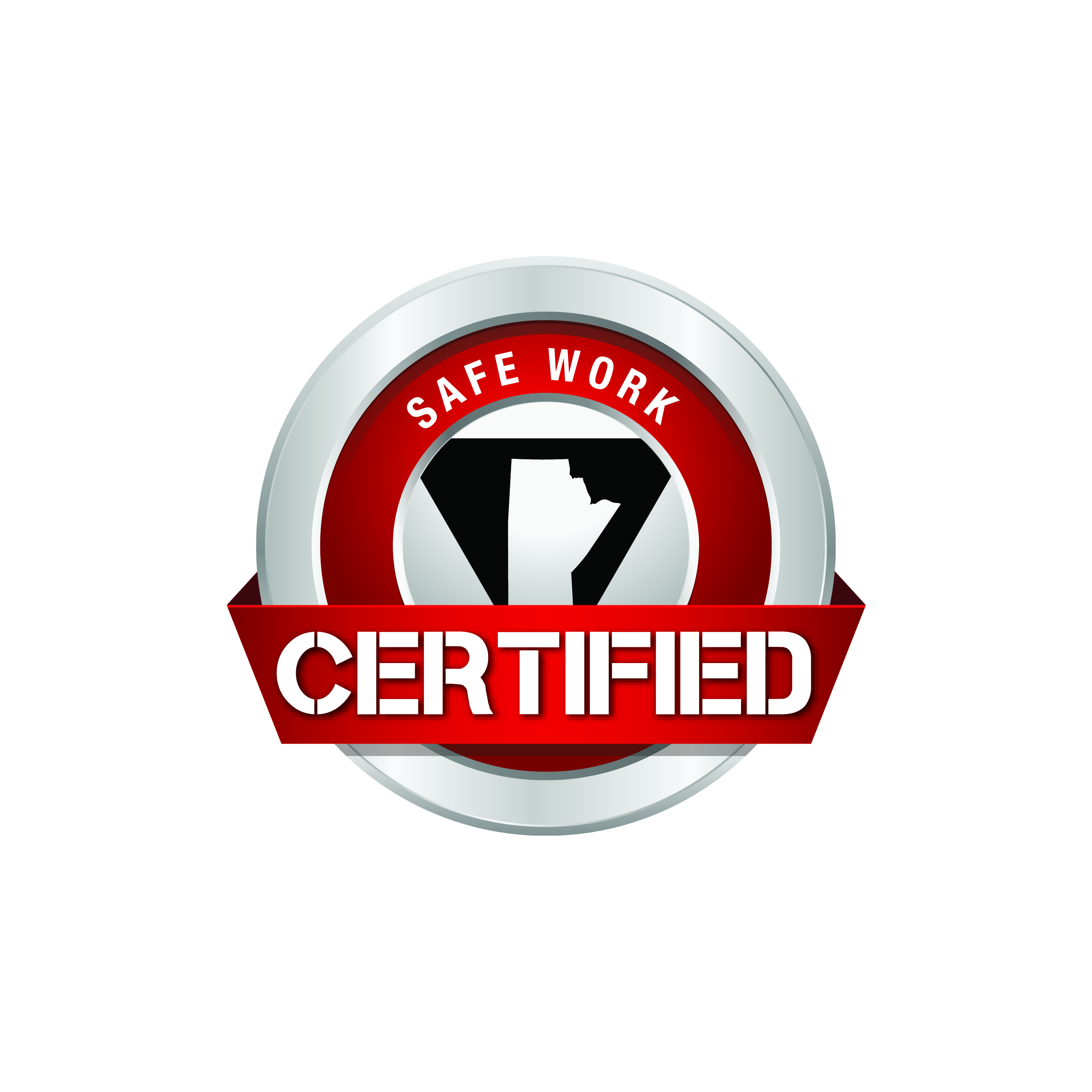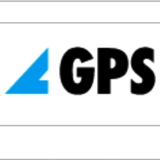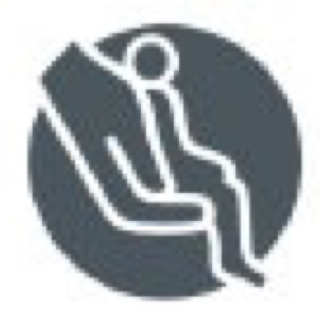Information
-
Document No.
-
Audit Title
-
Client / Site
-
Conducted on
-
Prepared by
-
Location
-
Personnel
Combustible Dust
-
Have all associates working in areas where combustible dust may be present been trained before beginning work, at least annually and as per applicable state or local standard. **Training documentation may be found in either the Hazard Communication or Com
-
Is the OSHA Combustible Dust Poster posted in the facility? **Look for the poster and make sure it is where all associates can see it.**
-
Are accumulations of combustible dust routinely removed from elevated surfaces including the overhead structure of buildings, etc.? **Ask the Plant Engineer/Production Manager, if and how? When in the field this is look for item, verify!**
-
Is a Warning Sign posted at the entrance to places where explosive atmospheres may occur? Do they have explosive dusts? **Review the assessment and then if appropriate ask what areas apply. Look for signs during physical assessment.**
-
Are employees notified monthly and trained at least annually of the hazards associated with combustible dusts? **This training must be completed within 365 days of the last training. The review period may range from 12 to 60 months and will be defined by
-
Has the annual reporting (July to June) to the GA State Fire Marshal been completed? **Ask Safety and Training Manager to show you the on-line system report. GA Comb Dust Facilities Only**
-
There is no dust accumulation of 1/32 inch thick, or greater? **Review their assessment and check the areas for accumulations greater than the thickness of a dime.**
-
Does the facility have a housekeeping program with regular cleaning frequencies established for floors and horizontal surfaces, such as ducts, pipes, hoods, ledges, and beams, to minimize dust accumulations within operating areas of the facility? ** Look
-
Is combustible dust cleaned up with a vacuum system to prevent suspension of dust particles in the environment? **Ask the Safety Training Manager how. If they do it in house look for the equipment and see if it is suitable. If done by contractor, look for
-
Are the dust-containing systems (ducts and dust collectors) designed in a manner that fugitive dusts are not allowed to accumulate in the work area? **If there is a build-up of over 1/32 inch then this needs to be addressed.**
-
In areas where the 1/32 inch of dust is not maintained at all times, are EX, DY, or EE rated powered industrial trucks being used? **Check data plates for appropriate classifications.**
-
In areas where a hazardous quantity of dust accumulates or is present in suspension in the air, does all electrical wiring and equipment comply with the electrical hazard classification? **Interview Plant Engineer or Plant Electrician.**
-
Are ducts designed to maintain sufficient velocity to ensure the transport of both coarse and fine particles? **(What are the velocities? Plant should have particle size distribution and PE design calculations. Review both.)**
-
Does the facility have an ignition control program, such as grounding and bonding and other methods, for dissipating any electrostatic charge that could be generated while transporting the dust through the ductwork? **Look for bonding and grounding of duc
-
Does the facility have separator devices to remove foreign materials capable of igniting combustible dusts? **Ask Plant Engineer to show you the collector.**
-
Are dust collectors greater than 8 cubic feet in volume located inside of buildings? **Ask the Plant Engineer/Production Manager volume of the dust collectors and location? Look for them in the field.**
-
Is the exhaust from the dust collectors recycled? **Ask Plant Engineer and if the answer is yes contact Risk Management.**
-
Does the dust collector system have spark detection and explosion/deflagration suppression systems? (There are other alternative measures.) **Have plant engineer show you the system and explain how it works. Review documentation of testing of the system.*
-
Are all components of the dust collection system constructed of noncombustible materials? *Look at the construction and make sure it is metal or other approved material. **
-
If dust explosion hazards exist in rooms, buildings, or other enclosures, do such areas have explosion relief venting distributed over the exterior walls of buildings and enclosures? **Look for venting areas and confirm they are away from areas that could
-
Is venting directed to a safe location away from employees? **Look for venting areas and confirm they are away from areas that could pose an issue.**
Program Major Finding. There are not sufficient minor findings that there is an overall program/section failure. **This is only used if: a. The complete lack of an entire regulatory required program or standard; b. No attempt to implement any of the requi
-
Are all FM Global Report recommendations from the most recent FM Global Inspection are complete? **Review the most recent FM Global Report/FM on-line system.**
-
Are fixed fire protection sprinkler systems inspected/tested annually by a certified fire protection system contractor per NFPA 25? (This should include an annual main drain flow test, and an annual opening of inspector test valve. ** Observe the system t
-
Is each diked area containing two or more tanks subdivided, preferably by drainage channels or at least by intermediate dikes, in order to prevent spills from endangering adjacent tanks within the diked area? **Physically inspect these areas. **
-
Is each diked area containing two or more tanks subdivided, preferably by drainage channels or at least by intermediate dikes, in order to prevent spills from endangering adjacent tanks within the diked area? **Physically inspect these areas. **
-
Are all Sprinkler System recommendations from the most recent Sprinkler Contractor Annual Inspection Report are complete? *review the most recent Sprinkler Contractor Report.**
-
Fire detection and alarm systems, exit lighting, fire doors, where provided, are continuously in proper operating condition. Annual inspection by qualified outside contractor must be conducted. **Review the annual inspection report for recommendations and
-
Fire detectors and fire detection systems are tested and adjusted as often as needed. Servicing, maintenance and testing of fire detection systems are performed by a trained person. **Review documentation from Servicing Company.**
-
Standpipe & Hose Systems Hose systems are inspected at least annually and after each use. **Review annual inspection documentation from the licensed contractor.**
-
Are annual maintenance checks for fire extinguishers and fire hoses conducted and documented with the date recorded and retained for one year after the last entry? Annual inspection must be by a licensed contractor. ** Review documentation.**
-
Hemp or linen hose are unracked, physically inspected for deterioration, and reracked using a different fold pattern at least annually, with defective hose replaced. **Review documentation and observe hose for damage.**
-
Are fire extinguishers and fire hoses visually inspected and documented monthly? **Documentation reviewed can be either written reports or tags affixed to the equipment. Fire extinguishers must be inspected utilizing Fire Extinguisher Inspection Requireme
-
If the facility provides portable fire extinguishers and designates certain associates as authorized to use them to fight fires, with all other associates in the fire area required to evacuate the building. This is acceptable. If the facility elects not t
-
Where portable fire extinguishers are provided for associate use, is there an educational training program to familiarize associates with principles of use and hazards involved with incipient stage firefighting? **Review documentation.**
-
For all high hazard processes, such as flammable liquids, dusts, unstable materials, etc., has a qualified fire protection engineer reviewed the process for proper fire protection and fire prevention systems? **Inspect documentation if applicable.**
-
Fire protection equipment and apparatus is painted red and is marked with appropriate labeling. This would include Sprinkler Risers, Extra Head Boxes, Standpipes. Entire Sprinkler line does not need to be painted. **Fire Extinguishers can have either red
-
At least one manual station is provided for discharge activation of each fixed extinguishing system. (Halon or Dry Chemical system). ** Inspect for button with ID labels. There are very few of these in our facilities and would typically be located where t
-
Facility has PPE needed for immediate rescue of associates trapped in hazardous atmospheres created by an agent discharge. ** Would only apply to IDLH atmosphere areas, limited application in our Facilities.**
-
No automatic sprinkler systems have non-compliance tags attached? **most states use a yellow tag for non-compliance.**
-
All sprinkler head storage boxes contain a head wrench and a minimum of 6 extra sprinkler heads (heads suitable for the specific sprinkler system) per box? ** Inspect boxes for minimum required heads and a head wrench. If multiple risers and multiple spri
-
Are sprinkler heads kept free of obstructions and free and clean of oils, dust or other residues? **Conduct a random visual inspection of sprinkler heads with specific attention paid to areas where lint and dust can accumulate.**
-
Automatic Sprinkler Systems Sprinklers are protected from mechanical damage. **Look for ballards or other protection between the system and plant vehicles.**
-
Is 18 inches the minimum vertical clearance between automatic sprinkler system heads and material below? In yarn warehouses, it should be 36" of clearance. *Observe various areas for proper clearance.**
-
Fire detection equipment is protected from corrosion, weather and mechanical impact where applicable. **Inspect any outside equipment.**
-
Do all facility risers have a current inspection tag? ** Current Tag Less than 12 months old.**
-
Do the top pressure gauges on all risers read between 45-170 psi on Wet Sprinkler Systems or 25-170 psi on Dry Systems (note if the plant has a fire pump the gage readings may be as high as 250 psi so ask if there is a fire pump on readings above 170 psi)
-
Do the bottom gauges on all sprinkler system risers read between 40 and 170 psi (note if the plant has a fire pump the gage readings may be as high as 250 psi so ask if there is a fire pump on readings above 170 psi)? **Contact Risk Management or a licens
-
Standpipe & Hose Systems Standpipes are located or otherwise protected against mechanical damage. **Inspect this equipment and make sure it is protected from damage.**
-
Fire Detection and Employee Alarm Systems Servicing, maintenance and testing of employee alarms is done by trained persons. **Review documentation on annual inspection and testing by licensed contractor. Other required testing (as per SAFE Reference docum
-
Reels and cabinets provided to contain fire hose are designed to facilitate prompt use, are conspicuously identified and used only for fire equipment. **Observe for labels or signage.**
-
Hose outlets and connections are located high enough above the floor to avoid being obstructed and to be accessible and are plugged/capped, if hoses are not connected. **Observe to make sure they are protected or capped.**
-
As referenced by Annual Fire Hose Test Record, audit two random locations for compliance (in good condition and neatly stored.)
-
Are portable fire extinguishers mounted, located and identified so that they are readily and safely accessible to associates without subjecting the associates to possible injury? **Facilities must securely install extinguishers on the hanger or bracket su
-
Are portable fire extinguishers fully charged and operable and kept in their designated places? ** Conduct a visual inspection of representative sample.**
-
When portable fire extinguishers are removed from service for maintenance or recharging is alternate equivalent protection provided? **Inspect to be sure there are no missing extinguishers.**
-
Portable extinguishers are hydrostatically tested at required intervals with certification record kept. This is typically ever 6 years. **Look for a stamp on the unit showing the hydrostatic test date. This is only needed 6 years after the manufacturer of
-
Weight and pressure of refillable containers is checked at least semi-annually with container subjected to maintenance if necessary. **This refers to type BC extinguishers only.**
-
All fire hydrants and PIVs are clearly identified. *Observe for easy identification.**
-
Are hydrants free from obstructions? ** Look for 36" of clearance on all sides of the hydrant and that hose connections are 18" from the ground. Hydrant orientation should be such that is possible to connect a fire hose to each hydrant nozzle.**
-
Is hydrant in good physical condition and protected from damage? ** Observe for protection, if in or along side roads and driveway. Look for evidence that it has been struck by a vehicle or other equipment.**
-
Has annual flushing and maintenance of hydrants been preformed? ** Inspect documentation and look at physical condition of the hydrant for issues. (Note: if the hydrants are city fire system hydrants then this is done by the city. This is only required fo
-
Are hydrant caps in place and are chains connected to the cap? **Observe for this.**
-
There are no leaks from the hydrant, around the caps or around the hydrant base. **Observe for leaks or damage.**
-
Program Major Finding. There are not sufficient minor findings that there is an overall program/section failure. **This is only used if: a. The complete lack of an entire regulatory required program or standard; b. No attempt to implement any of the requi
Fire Water Systems
-
Interior inspection of steel water storage tank has been completed by a licensed qualified contractor every five years. **Review Inspection Documentation.**
-
Recommendations from the 5 year inspection by a qualified outside contractor were fully completed. **Review recommendation completion documentation.**
-
Water Storage Tanks water level indicator are tested by a licensed outside contractor at least every 5 years for accuracy and freedom of movement. **Review Inspection Documentation.**
-
An annual fire pump test has been performed by a licensed contractor. **Review Inspection Documentation.**
-
Issues identified by the annual fire pump test have been corrected. **Review Recommendation Completion Documentation.**
-
Weekly pump run is completed and documented by a qualified operating person who observed the completion. **Review Documentation.** (Weekly Fire Protection Inspection form)
-
A documented monthly water storage tank inspection was conducted by the facility to verify water level and water condition. **Review Inspection Documentation.**
-
A documented quarterly exterior water storage tank visual inspection was conducted by the facility to verify tank condition. **Review Inspection Documentation.**
Flammable/ Combustible Liquids
-
Are signs posted to prohibit smoking, open flames, and other ignition sources in 1) fueling areas or 2) where flammable or combustible liquids are received, dispensed, or stored or 3) paint spraying areas and paint storage rooms? **Even in Smoke Free Pla
-
Is the storage of flammable or combustible liquids prohibited in office areas except that required for maintenance and operation of building and operation of equipment? [29 CFR 1910.106(d)(5)(iii)]
-
Are flammable and combustible liquids stored in their original container or in an approved safety can or if bulk quantities in tanks? [NFPA 30]
-
Are containers of flammable and combustible liquids closed when not in use? [29 CFR 1910.106(e)(2)(ii)]
-
Unless the original container is designed to be used, are flammable or combustible liquids transferred to an approved safety can prior to use? [NFPA 30]
-
Flammable/combustible liquid containers, such as paint and solvent cans, are stored in approved, fire-rated safety cabinets equipped with self-closing doors (FM-approved), when not in use. NFPA 1. **(OSHA regulations require more than 25 gallons of Class
-
Do all metal cabinets carry independent third party certification, such as FM Global (FM approved) or Underwriters Laboratories (UL Listed)? ** Look for labeling FM Approved and/or UL Listed on the cabinet. [This will meet the requirements for construct
-
Are all wooden flammable constructed as follows: the bottom, sides, and top are of an approved grade ( shall not break down or delaminate under fire conditions) of plywood at least 1 inch in thickness; all joints are rabbetted and fastened in two directi
-
Are all cabinets labeled in conspicuous lettering: "FLAMMABLE-KEEP FIRE AWAY"? [29 CFR 1910.106(d)(3)(ii) and 29 CFR 1926.152(b)(2)(iii)]
-
Flammable storage cabinets are free from damage, capped (i.e. sealed, unless vented to the outdoors) and kept closed at all times. [NFPA 30] ** Observe cabinets for closed doors and proper seal.**
-
Flammable storage cabinet contents are orderly and there is no storage in the cabinet other than flammable or combustible liquids. [NFPA 30] ** Observe cabinets for orderly (not organized and cataloged) storage of materials and the absence of any materi
-
Is storage in cabinets restricted to not more than 60 gallons of Class I or Class II liquids and not more than 120 gallons of Class III liquids? [29 CFR 1910.106(d)(3)(i)
-
Are no more than three (3) cabinets located in one fire area? [NFPA 30]
-
Is the storage of flammable and combustible liquids prohibited near exits, stairways, or areas normally used for the safe exit of people? [29 CFR 1910.106(d)(5)(I)]
-
Is storage of flammable and combustible liquids limited to that required for current activities and maintenance? [NFPA 30]
-
Outside of approved cabinets or storage rooms, are containers of Class I liquids limited to a capacity of one gallon, or two gallons, if safety cans are used? [NFPA 30: 4-5.5.2]
-
Are fewer than 10 gallons of Class I and Class II liquids stored outside of an approved storage cabinet or interior storage room (except in safety cans)? [NFPA 30 4-5.5.3]
-
Are fewer than 25 gallons of flammable liquids stored in safety cans outside of an approved storage cabinet or interior storage room? [NFPA 30: 4-5.5.4 and 29 CFR 1926.152(b)(1)]
-
Are fewer than 60 gallons of Class IIIA liquids stored outside of an approved storage cabinet or interior storage room? [NFPA 30 4-5.5.5]
-
Are spills of flammable or combustible liquids cleaned up promptly? [29 CFR 1910.106(e)(9)(i)]
-
Are combustible waste materials and residues kept to a minimum, stored in covered metal receptacles, and disposed of daily? [29 CFR 1910.106(e)(9)(iii)]
-
Are waste solvents stored in approved solvent waste cans
-
Are oil- and solvent-soaked rags placed in approved oily waste cans which are emptied daily. 1910.106(e)(9)(iii)
-
Are storage areas for flammable or combustible liquids kept free from combustible materials? [29 CFR 1910.106(d)(iv)]
-
Is the quantity of flammable or combustible liquids in the vicinity of spraying (lacquer, paint, etc.) operations kept to a minimum? **Look to make sure there is not over 1 gallon not stored in a cabinet or storage room.**
-
Are openings to other rooms or buildings from flammable/combustible liquids storage rooms provided with a noncombustible liquid-tight raised sill or ramp at least 4 inches in height? [29 CFR 1910.106(d)(4)(i)]
-
Are openings to storage rooms provided with approved self-closing fire doors? [29 CFR 1910.106(d)(4)(i) and 29 CFR 1926.152(b)(4)(ii)]
-
Are portable fire extinguishers available at locations where flammable or combustible liquids are stored? [29 CFR 1910.106(d)(7)] Note: At least one portable fire extinguisher having a rating of not less than 12-B units shall be located outside of, but n
-
Adequate sprinkler protection, secondary spill containment, and ventilation is in designated flammable/combustible storage rooms. NFPA 30
-
Is bulk storage of flammable or combustible liquids in portable containers located in a separate building? **Portable containers of gasoline or diesel are not to exceed 5 gallons. The maximum amount of flammable liquids that may stored in a building are 2
-
Are containers and portable tanks used for flammable liquids electrically bonded and grounded during transfers? [29 CFR1910.106(e)(3)(vi)] **Bulk drums of flammable liquids must be grounded and bonded to containers during dispensing. For bonding and grou
-
Are only approved pumps, drawing from the top of the storage containers, used to transfer flammable liquids? [29 CFR 1910.106(e)(2)(iv)(d)]
-
Are power shut-off controls for fuel pumps remotely located, clearly identified, and readily accessible? **Look for the shut-off button and make sure it is identified. This is typically for gasoline dispensing areas.**
-
Is the use of air or gas pressure prohibited for transfer of flammable or combustible liquids unless the tank, drum or containers has been approved as a pressure vessel? [29 CFR 1910.106(e)(2)(iv)(d) and NFPA 30]
-
Are only approved self-closing valves or faucets used in gravity transfer of flammable liquids from storage containers? [29 CFR 1910.106(e)(2)(iv)(d)]
Diking around tanks does have a slope of not less than 1 percent away from the tank shall be provided for at least 15 m (50 ft) or to the dike base, whichever is less. **Physically inspect these areas.**
-
Is each diked area containing two or more tanks subdivided, preferably by drainage channels or at least by intermediate dikes, in order to prevent spills from endangering adjacent tanks within the diked area? **Physically inspect these areas. **
-
Program Major Finding. There are not sufficient minor findings that there is an overall program/section failure. **This is only used if: a. The complete lack of an entire regulatory required program or standard; b. No attempt to implement any of the requ
Red Tag System
-
Were all associates authorized to impair fire protection equipment trained on the Red Tag program during the Review Period of the audit? (The review period may range from 12 to 60 months and will be defined by the Lead Auditor.)
-
Were all Managers and Supervisors trained on the basics of the Red Tag program during the Review Period of the audit? (The review period may range from 12 to 60 months and will be defined by the Lead Auditor.)
-
Does the Red Tag program training documentation for the Review Period of the audit include the date of training? (The review period may range from 12 to 60 months and will be defined by the Lead Auditor.)
-
Does the Red Tag program training documentation for the Review Period of the audit include the signature of trainer? (The review period may range from 12 to 60 months and will be defined by the Lead Auditor.)
-
Does the Red Tag program training documentation for the Review Period of the audit include the signatures of trainees? (The review period may range from 12 to 60 months and will be defined by the Lead Auditor.)
-
Does the Red Tag program training documentation for the Review Period of the audit include the topic of training? (The review period may range from 12 to 60 months and will be defined by the Lead Auditor.)
-
Does the Red Tag program training documentation for the Review Period of the audit include the outline/description of what was covered? (The review period may range from 12 to 60 months and will be defined by the Lead Auditor.)
-
Is the Red Tag System being used to control fire protection equipment impairments? **Verify by inspection at least 10% of the tags but no less than 100% if there are less than 10 per year.**
-
Do all completed Red Tags document the number of turns to open and close the sprinkler isolation valves?**Review a representative number of tags.**
-
Do all completed Red Tags document the reason for the impairment?
-
Do all completed Red Tags document the actual time that the sprinkler valve was closed and the time that it was reopened? **Review a representative number of tags.**
-
Do all completed Red Tags document the person responsible for the impairment and the person authorizing for the impairment? **Review a representative number of tags.**
-
Do all completed Red Tags document the sprinkler valve location/number? **Review a representative number of tags.**
-
Program Major Finding. There are not sufficient minor findings that there is an overall program/section failure. **This is only used if: a. The complete lack of an entire regulatory required program or standard; b. No attempt to implement any of the requi











